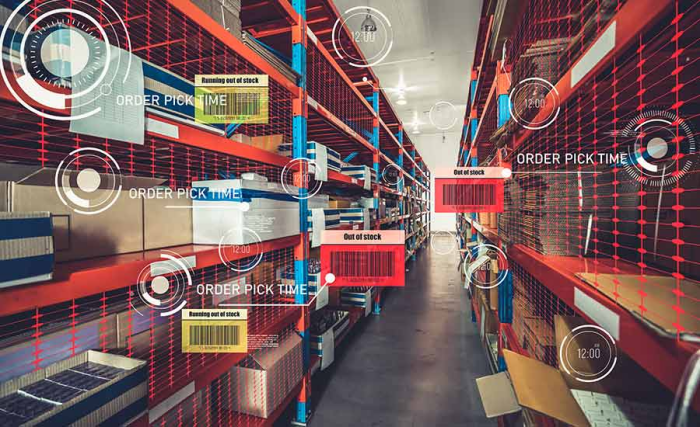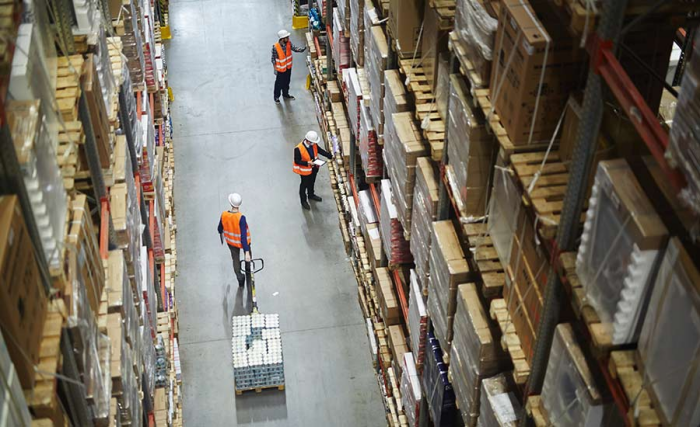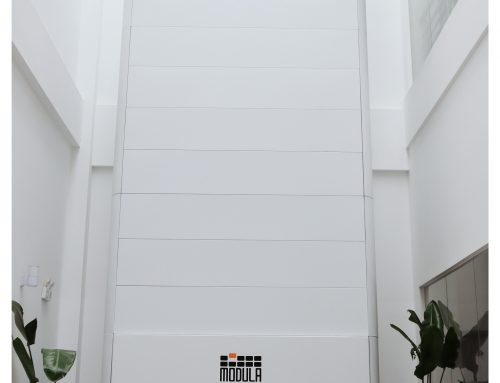
A warehouse management system (WMS) is a solution that helps companies manage daily warehouse operations. It’s a vital component of supply chain management, offering real-time visibility into all inventory stages, from transit to storage and dispatch.
In this article, we’ll cover everything you need to understand about warehouse management systems, including their functionality, various models, and introduce our sophisticated and innovative solutions at Modula APAC.
What Is Warehouse Management?
Warehouse management is an umbrella term that describes daily operations in the facility, such as managing layout, inventory, labour, order fulfillment, and shipping coordination.
Effective warehouse management boosts productivity and efficiency, ensuring fast and accurate order fulfilment.

Warehouse Management vs. Inventory Management
Warehouse management involves overseeing daily warehouse operations to ensure timely, accurate, and cost-effective delivery of products to customers.
In contrast, inventory management oversees stock across multiple warehouses or an entire company. It optimises material handling, or the movement of goods from point A to point B, to save space and money while meeting customer demand.
What Is a Warehouse Management System (WMS)?
A warehouse management system (WMS) is a software application that automates daily warehouse operations.
With a WMS, your employees can:
- Handle and monitor individuals SKUs, product records, unique tags, product transfers, and inventory counts
- Arrange orders efficiently
- Control and monitor the placement and transit of goods within your facility
- Establish location identifiers and markers
- Administer and delegate tasks to team members, define access controls and privileges, and observe user actions
- Gain instant insights into warehouse staff, labor costs, response rates, productivity gaps, and planning trends
- Monitor package delivery times and destinations for accuracy
- Automatically generate packing slips, invoices, and send shipment notifications
- Oversee system functionality, detect and address issues, produce reports and notifications, review and assess data
- Connect and exchange information with other systems and applications via data input or file transfer
How Does a Warehouse Management System Work?
Here’s how a WMS typically works:
- Optimise schedules: A warehouse management system analyses existing orders and staff availability to plan daily estimate costs and coordinate with transport providers. This ensures optimal timing for receiving and shipping orders.
- Organise your warehouse: A WMS utilises warehouse size and inventory details, such as pallet and product dimensions, to create strategic layout designs that expand storage space.
- Manage inventory: A WMS tracks inventory movement using barcodes, sensors, and RFID tagging. Warehouse employees scan products as they receive, store, pick, pack, and ship orders. This updates inventory levels in real time, minimising waste and preventing shortages.
- Fulfil orders: A WMS aids in fast and accurate order fulfillment by providing picking teams with detailed, mobile-accessible packing lists that show precise item locations.
- Monitor system performance: A WMS ensures procedural adherence, monitors operations for issues, and collects data to assess performance, identify improvements, set goals, and track progress.
Types of Warehouse Management Systems
There are various warehouse management systems (WMS) available, each tailored to your business needs and goals, including:
1. Integrated Warehouse Management System
An integrated WMS typically serves as an extension of your existing ERP system — a comprehensive software that consolidates core business functions like finance, customer relations, and project management.
An integrated WMS synchronises with other business processes, including invoicing, sales, and accounting, offering a unified view of your operations.
2. Stand-Alone WMS
A stand-alone WMS independently manages warehouse operations such as inventory control and report generation. It is typically more affordable than an integrated WMS.
It provides limited functionality for other business areas like accounting, order processing, and reverse logistics.
3. Cloud-Based WMS
A remote host manages a cloud-based WMS, allowing access from anywhere, anytime. This type of WMS requires less on-site hardware and IT support compared to on-premises solutions.
Cloud-based warehouse management systems are quick to implement and highly customisable. This enables companies to tailor them to their specific needs.
A third-party provider typically manages cloud WMSs on a subscription basis, reducing upfront costs and simplifying maintenance needs.
4. Supply Chain Module WMS
A supply chain module WMS ensures seamless coordination across various functions beyond warehousing.
It manages all aspects of the supply chain, including customer and vendor relationships, sourcing, manufacturing, and transportation. The integration provides real-time visibility, improving decision-making and resource allocation.
As a result, many third-party logistics (3PL) providers use it alongside other WMS solutions. Although setting up the Supply Chain Module WMS may require some integration effort, it offers significant benefits in optimising the entire supply chain.
Key Benefits of a Warehouse Management System
Acting as the backbone of your eCommerce warehouse, a WMS decreases inefficiencies and supports business growth.
A WMS can benefit your warehouse operations in several ways, including:
1. Enhancing Inventory Accuracy
A well-implemented WMS provides real-time inventory tracking, ensuring precise stock counts and diminishing inventory shrinkage.
Many systems even allow you to set automatic reorder reminders when SKUs reach predetermined thresholds, streamlining replenishment.
Additionally, warehouse management systems often track inventory and order histories, allowing you to monitor SKU velocity over time and make more accurate demand forecasts.
2. Improving Order Efficiency
A WMS integrates with your eCommerce platform, like Shopify or Wix, to keep your inventory updated in real-time. This reduces the risk of customers ordering out-of-stock items.
With accurate inventory data, orders move through the supply chain more efficiently.

3. Strengthening Inventory Security
Without proper safety protocols, warehouse theft can occur — even in facilities like Amazon’s.
Warehouse management systems amplify inventory security by enabling access controls, employee permissions, and user activity tracking.
4. Reinforcing Accurate Order Picking
A WMS provides precise picking instructions to handheld devices or mobile terminals, detailing optimal routes, item locations, and quantities to boost accuracy and efficiency.
Some systems also integrate with pick-to-light technology. They use visual cues to guide pickers to the correct items and quantities, reducing mispicks.
5. Enabling Faster Shipping
With the right WMS streamlining your fulfilment logistics, your team can calculate estimated shipping times and assess the feasibility of offering additional shipping options.
For example, it can analyse logistical data to evaluate if overnight or same-day delivery is achievable based on your current inventory locations and transportation resources.
6. Lowering Costs
While a WMS may seem costly upfront, it delivers long-term savings by:
Decreasing manual errors, such as mispicks
Accelerating fulfilment to maximise labour efficiency
Mitigating inventory shrinkage and stockouts with improved visibility
Supercharge Your Operations With Modula APAC’s Warehouse Management System
At Modula APAC, we offer automated storage solutions and warehouse management systems that streamline warehouse space, picking processes, and inventory management across industries.
Our intelligent, end-to-end WMS functions as stand-alone software for manual warehouses and operates seamlessly with automated storage and retrieval systems (ASRS).
With advanced features and a user-friendly interface, it integrates easily with most distribution management system (DMS) and enterprise resource planning (ERP) systems, ensuring faster and more accurate receiving, picking, and storing processes.
Get in touch with us to understand how our technology can benefit you and your team. Our experts are prepared to offer customised guidance and solutions to address your unique warehouse requirements.









Leave A Comment